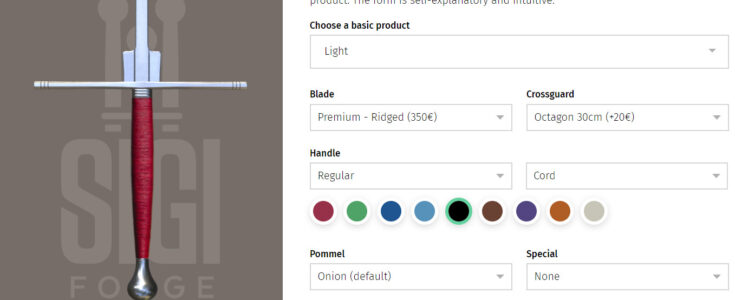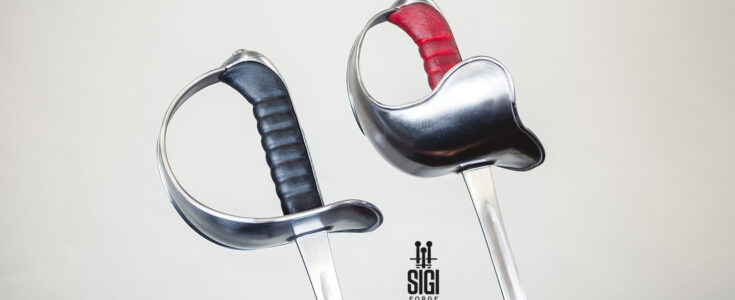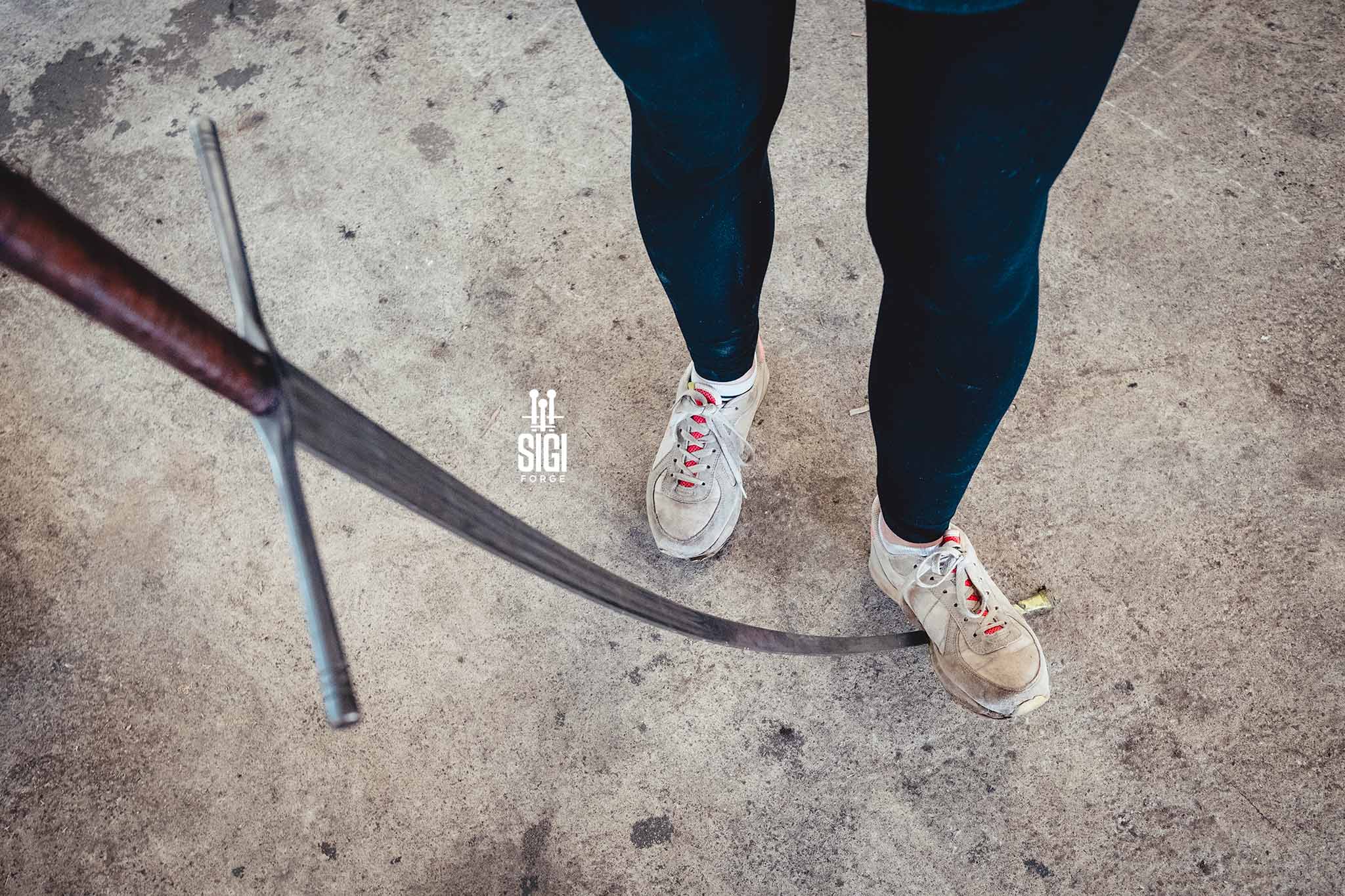
A new SIGI sword arrives. So shiny, so nice. It makes a beautiful „swoosh“ sound when you swing it and you admire the handling. It’s so great to have it finally with you. You take it to your first session and enjoy it to the fullest. The next day you see a small layer of rust forming along the blade. Dang, must have left it on my jacket. What now?
As someone once said, the only sword that doesn’t get rusty is the one you don’t own. As much as everybody loves perfect and pristine conditions we need to accept it as a fact. All it takes is but one sweaty touch of your fingers during your session. And not only that – your sword will get some damage over time (scratches, maybe even some nicks, the blade might bend etc.). At the end of the day it’s just a tool which goes through repeated heavy stress. SIGI makes sure that your swords will survive and work for you flawlessly as long as they can but some stuff is inevitable with its use.
The elementary sword care – oil
The number one thing you might do to prevent the rust forming is using a protective oil. There’s a multitude of different products available on the market. SIGI uses Ballistol – Ballistol is a mineral based oil that is used mostly by hunters and firearm collectors to preserve their arms. It works great with swords and it’s the first thing you can smell when you unpack our swords.
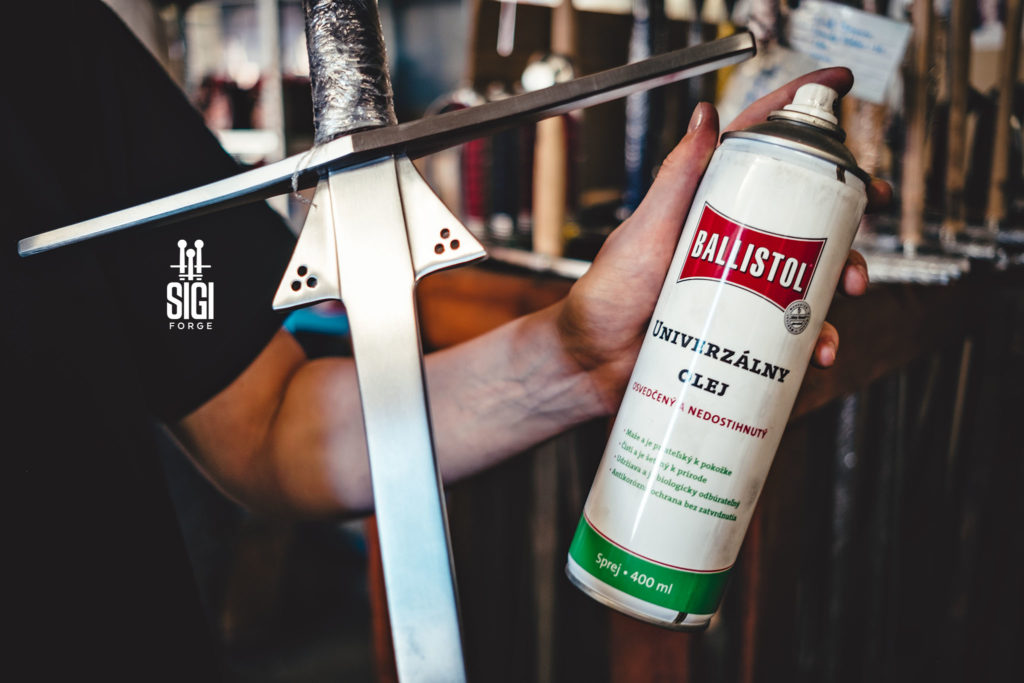
One of the reasons we love Ballistol compared to similar products is its eco-friendliness. It’s biodegradable, it doesn’t harm the environment and a fun fact – it’s not gonna harm you even if you’ve eaten it (not that you should, but some people use it for better digestion).
Once in every while spray your sword and use a piece of cloth to create a thin protective film. The old-sock-like smell will be weird at first but you’ll get used to it quickly.
Ballistol can sometimes create a layer similar to rust, mainly if the environment where you live is very humid. Worry not, you can easily clean it away.
If Ballistol is not available in your country, feel free to ask guys working in the nearest hobby store for help. Like we said earlier, there are plenty of alternatives.
The first aid – a sanding block
Before we move to the next step it’s important to note that rust is a bad thing. There are many different kinds of rust that can affect metals. If you use your sword often and it’s not covered all up in red rust but its color is rather black, it might seem the rust is not affecting the sword but in fact it still is, maybe slower.
Furthermore aesthetically it’s not the nicest thing to look at. To prolong the life of your sword as much as you can, you should clean it away and rather use an oil as protection. The sooner you do it, the better – older rusty stains go deeper and are harder to clean.
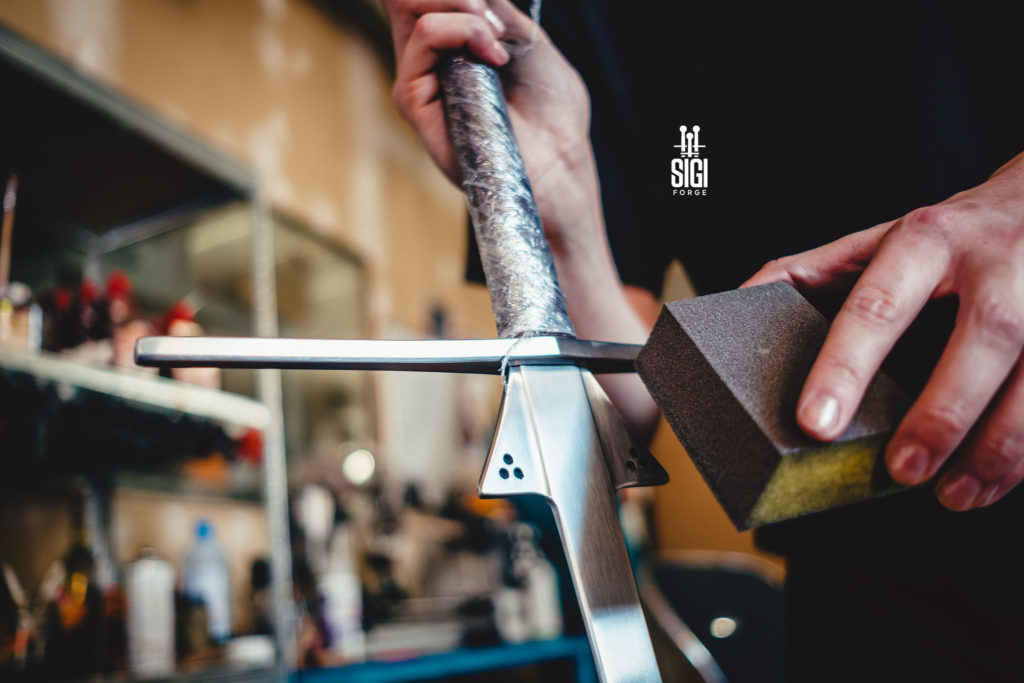
If rust forms, the best thing to have at hand is a sanding block (or some call it a sandpaper block – see the picture above). Sandpaper of different grits is heavily used in our industry, mainly in the form of belts on heavy machinery. In order to achieve the shiny final look, a much finer and finer sandpaper is used. In the last steps of the process SIGI always uses sanding blocks.
Why are they better than regular sandpaper? They come in all kinds of shapes. Some of them have a sharp edge you might use to get to the places where it would be otherwise difficult to get. Due to its shape you can hold it firmly and use it from any angle necessary. Sometimes you use the sides for finer work, sometimes the larger areas. They are super cheap (their starting cost is somewhere around one Euro) and the older they are and the more you use them, the better results they provide.
If your blade is rusty and you want to polish it really quickly, the best trick is using the sandwich method – you grab two sanding blocks together and just slide them up and down the blade. Legend has it that a master cleaner can get their blade shiny as new in less than a minute.
Similar to ordinary sandpaper they come in different grits. We suggest using a fine or a very fine grit. Fine is rougher and would leave little traces, but cleans quicker. Very fine leaves smaller traces and makes an amazing shiny final polish. With time and use the traces will disappear and they will create instant polished swords.
Other specific care
Using the two methods above you will make sure your sword will always be shiny and look like new. In the following section, we’ll describe some other typical issues you might have with your sword and how to fix them.
Q: My sword rattles – I can hear a weird sound coming from inside of the handle
A: If you’re using a SIGI sword, this might sometimes happen. It’s nothing serious – in a vast majority of the cases it’s a buildup of dust that got into your handle and you can fix it immediately. All you need to do is to put a few drops of an oil/lubricant down the opening on the crossguard. Any will do, even Ballistol. The sound will cease immediately.
Q: I made a strong thrust on my partner and the blade stayed bent!
A: Every sword ever made will eventually warp to one side or the other, mainly if it’s made to be flexible and safe for use. It’s not a bad thing – your blade reacts to stress by deformation (and then anti-deformation forces work the other way around) instead of breaking or letting the full force of your strike be absorbed by your partner (and we like our fencing partners and care for their wellbeing, don’t we).
There’s a lot of actual science and material engineering behind the way we make SIGI swords. We make sure that they survive as long as they can by setting their properties correctly. If they bend, most of the time they can be set straight again. What’s the best way to do it?
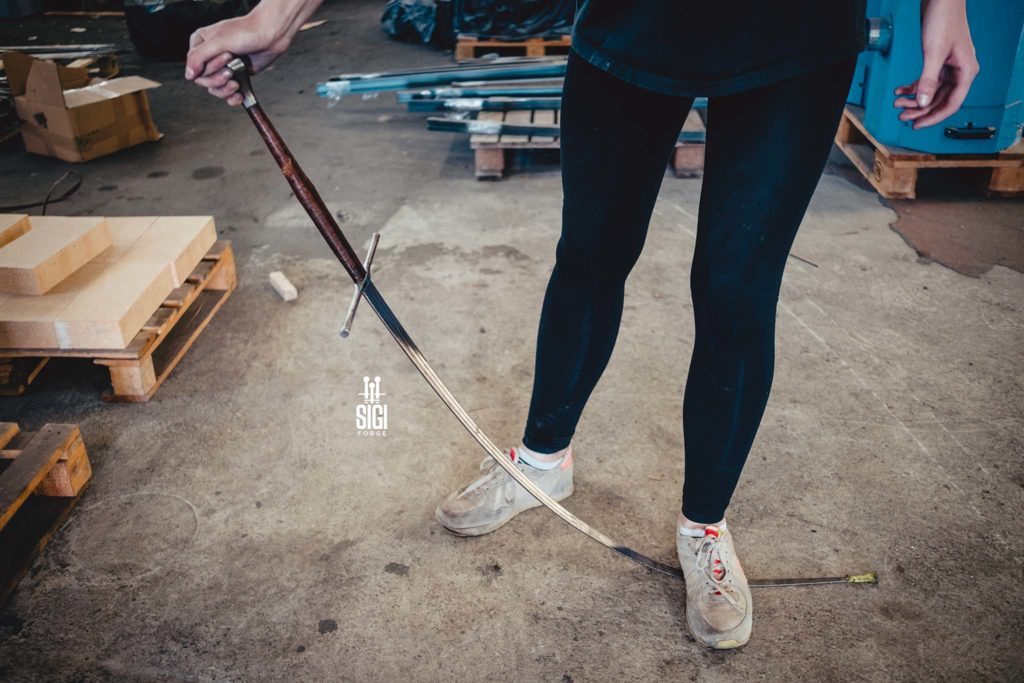
You could find a dozen different methods. But the one that we always recommend and which is the simplest and best working is the foot method. If your blade is bent, hold your sword in one hand with the tip against the ground. Use one of your feet to step over the blade near the place where it’s bent and pull strongly towards you. Don’t be afraid to use significant force. You can take the sword out to check if the blade is straight again. If not, apply until you can straighten it again. With a little training, it will take you 5-10 seconds to fix a warped blade.
Remember, swords will change in their properties over time. As you continuously beat the pieces of metal against each other, a warp might completely change or disappear. Your blade might get a little tougher and less flexible. All kinds of things happen. However the most important thing is that you can be certain of how the sword will behave and react.
Q: A nick appeared on my blade. Should I stop using it?
A: Unless the nick is huge and you can see cracks around it, feel free to use the sword further. If there’s a shard sticking out, you can grind it off using an industrial grinder or some hand tool from a hobby store.
Most swordmakers heat treat their swords around the same. However different kinds of metal can affect the sword’s hardiness and if two blades clash strongly against each other, stuff might happen. Don’t panic – your sword is made to survive and unless there is serious structural damage, it will survive.
Q: My cord/leather grip has been torn from direct strikes. What can I do?
A: In this case we’ll give you the most honest answer – use a tape. Damage to the handle will happen sooner or later and the quickest solution is to use a tape of your preference. Even in the times of ye olde, swords were rewrapped many times. Wear and tear.
Q: The leather on my grip is dry and rough, can I do something with it?
A: For sure. You can use a leather preserver. SIGI uses Fiebings Aussie leather conditioner with beeswax (ecology, smell and feeling) but feel free to use anything that will suit your needs. Just gently rub it down the handle.
Summary
If you’ve made it here, let’s do a quick summary to help you remember:
- To keep your blade shiny and without rust, use a protective oil. SIGI recommends Ballistol.
- A sanding block is the number one choice for rust removal. A very fine and fine grits are the most suitable. Ideally get the ones with one sharp edge.
- If your SIGI sword rattles let some oil into the crossguard opening. Fixed immediately.
- If your blade is bent or warped, step over it with your foot and pull strongly towards you. You can use this method indefinitely.
- If there’s a nick on your blade, you can grind off the sharp parts but unless there’s a crack, the sword is safe to use (alternatively consult it with us if you’re not sure).
- If you received direct strikes to your handle and the material is torn, tape it with a tape of your choice.
- If your leather handle feels dry and rough, rub some beeswax in it.
Aand that’s it! Hopefully this little guide will help you understand the basic sword care. If you didn’t find the answer for what you were looking for, feel free to get in touch with us through email or social media and we’ll respond as quickly as we can.
All the best,
The SIGI Team

